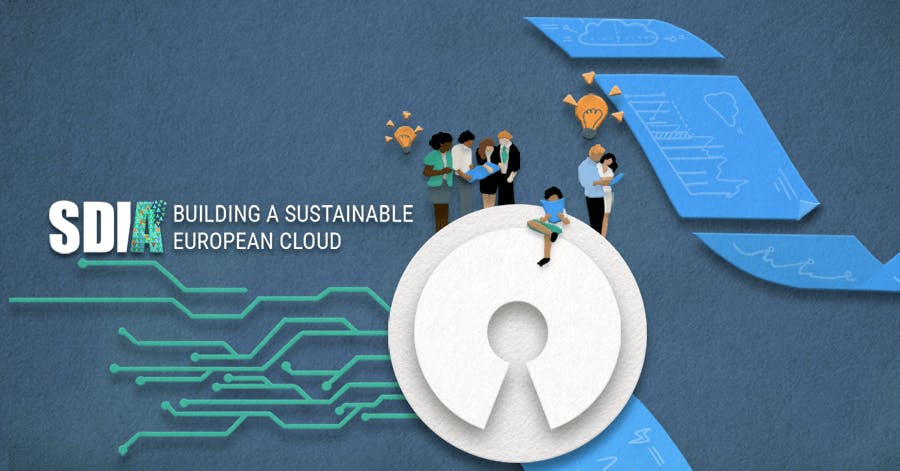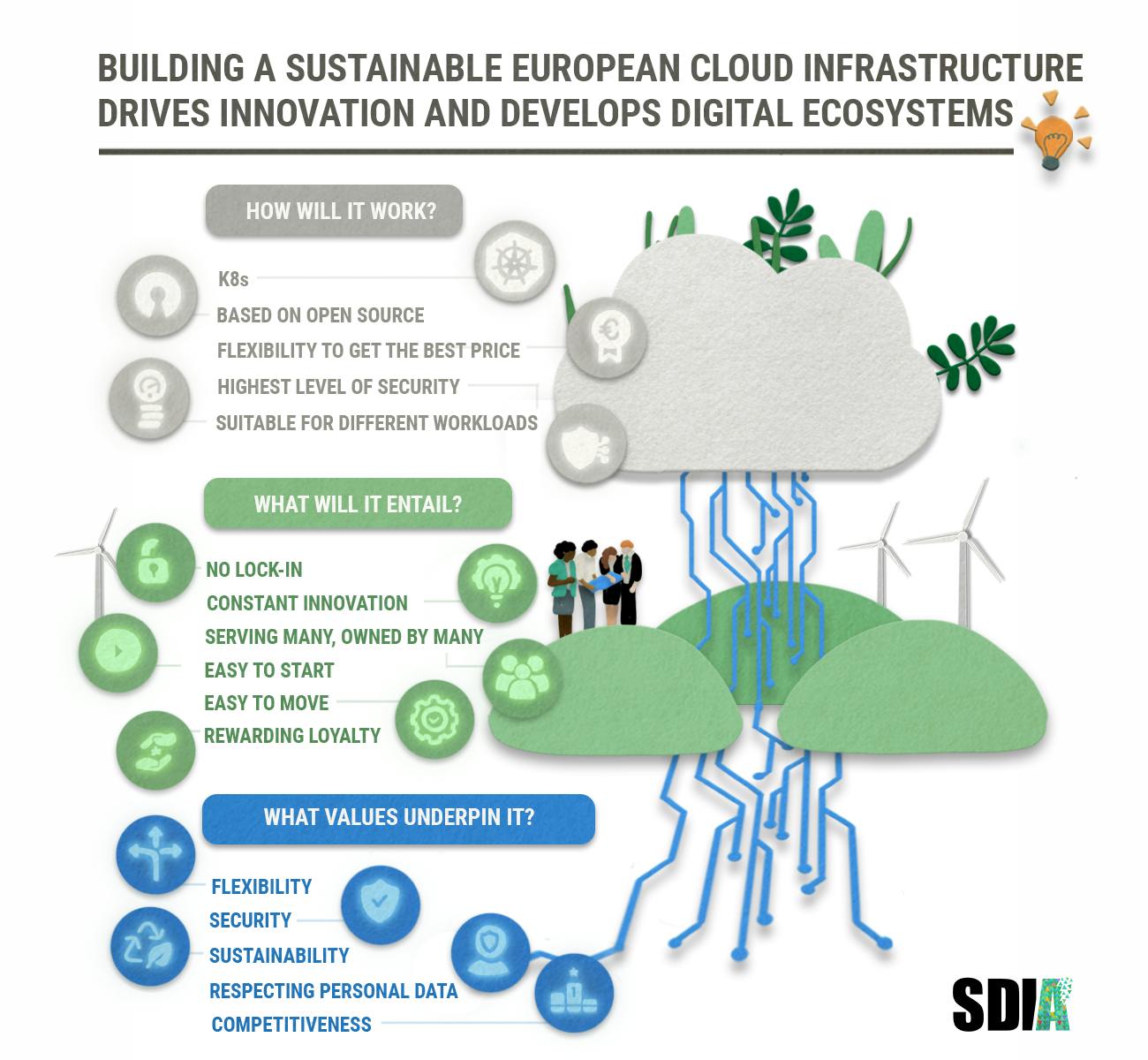A sustainable European cloud that can be open-source, fair, and create economic opportunities for all is possible – and it will soon become a reality. Such digital infrastructure will reflect European values, and provide a blueprint that others around the world can draw inspiration from to further develop their own digital economies. This is the second part in our three-part blog series exploring how to achieve this vision, which focuses on how to make a European cloud sustainable and who it will benefit. Read part one here, part three here, and a summary of all three on RIPE Labs here.
In our previous post, we introduced the concept of a sustainable European cloud, and why the time is ripe to develop this resource. How do we go about building that, though, and who exactly is it meant to benefit? The answer is simpler than you may realize.
The European Union in and of itself is a great example of balancing many actors – supplementing local decision-making (on the national level) with central steering (such as with environmental and economic policy). This model provides great inspiration for how future cloud platforms, such as the one we are proposing, should be designed. That translates to local infrastructure with a positive impact on the local economy with local ownership. At the same time, some functions will be centralized within a regional (i.e., European), continental, or even global context, such as security, resource purchasing, and pricing. It ultimately reflects a careful balance between decentralized (and thus, local) value creation and centralized function for ease-of-use and accessibility.
A cloud platform that is designed like this is not limited to Europe, yet it is fundamentally European because it is built on European principles and values. It is inclusive, it is fair, it is accessible, and it is sustainable. It is built to distribute economic value across many local actors. We call this a “European cloud,” but what we are creating, essentially, is a blueprint for how to build local and/or regional cloud infrastructure as well as developing a model for how to build and include those central functions. It is a cloud platform that is intrinsically European, yet globally applicable.
We believe that such equitable, reliable, and sustainable digital infrastructure will benefit everyone. It will inspire change, innovation, and the overall growth of the digital economy that will serve both local and international communities since the actual infrastructure is built and owned by local businesses, municipalities, IT companies, energy companies, and/or data center operators. Thus, the main purpose of a European cloud platform will be to enable cities, states, and regions across the continent, both within the European Union and outside of it, to create and develop their own local cloud infrastructure.

.jpg?ixlib=gatsbyFP&auto=compress%2Cformat&fit=max&rect=0%2C44%2C600%2C800&w=600&h=800)

.jpg?ixlib=gatsbyFP&auto=compress%2Cformat&fit=max&w=1280&h=720)

%20(5).png?ixlib=gatsbyFP&auto=compress%2Cformat&fit=max&w=1280&h=720)